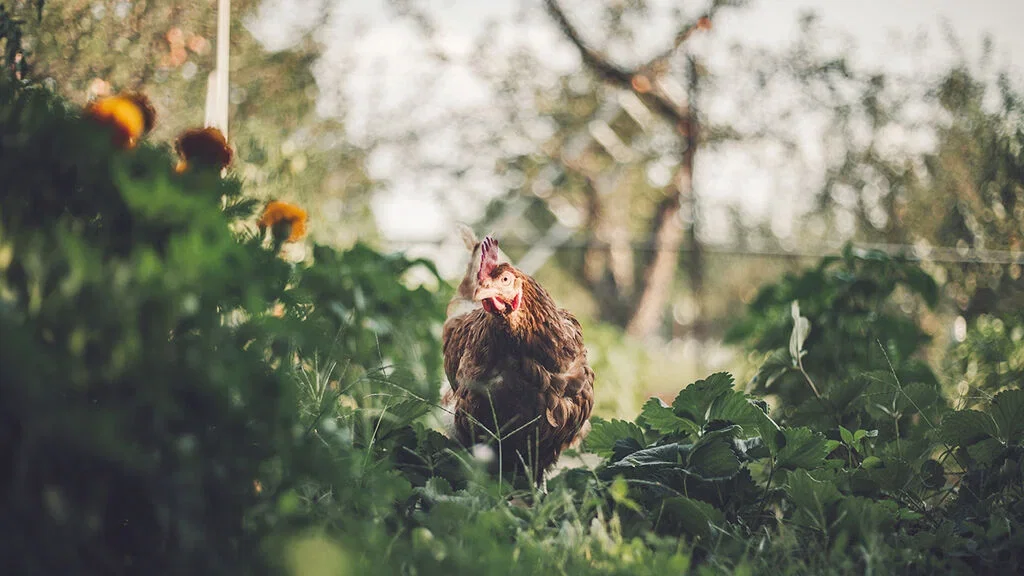Animal manure – a great resource in the garden
All plants need nutrients to grow – some more than others. But what exactly is the difference between the different types of manure? Here we take a closer look at the options available and how fertilizer can help plants thrive.

Most of us probably think of manure from horses, cows, or chickens when we hear the word livestock manure. However, there are other variants as well, although they are not as common where we live.
One example is guano, which is accumulated excrement from bats, seals, and seabirds. At one time, this type of fertilizer was extremely popular, perhaps because it was considered to be behind the Inca's golden empire. During the 19th century, the British Empire sent fleets to Peru to bring guano home, and it was often at the risk of life. Among other things, the workers were so plagued by the stench that some chose to throw themselves off the cliffs.
Animal manure is always worth its weight in gold
Here in the Nordic countries, we very rarely use that type of fertilizer, but all livestock manure is worth its weight in gold. They benefit the soil's micro-life, structure, and nutrient content. The difference between the various types of livestock manure lies mainly in the proportion of nutrients, but also in the consistency.
Chicken manure
Chicken manure is versatile and long-lasting, but also strong and fast-acting. It contains a lot of nitrogen and is therefore well-suited for nutrient-demanding vegetables.
It is possible to use chicken manure as a base fertilizer, but then you should preferably fertilize in moderate amounts in the spring, a couple of weeks before cultivation starts. Moderate use is best. This is because too much fertilizer can damage fragile roots, and because chicken manure can create imbalance due to its low potassium content if too much is used.
As with all other nutrients, you should reduce fertilization in the autumn, since the plants need time to go dormant in the winter to avoid freezing.
You can use chicken manure composted, diluted in water, or in the form of dried pellets that are diluted in water.
If you want to compost your own chicken manure, you can mix it with one part soil and let it stand for a year. Then you can use about 5 liters per square meter.

Horse manure
Horse manure in composted form is quite mild and contains less nitrogen than cow and chicken manure. It is particularly gentle when mixed with carbon-rich waste from the stable floor. It takes about 18 months to compost horse manure before you can grow nutrient-demanding plants directly in the material.
Fresh horse manure is stronger, but still not as nitrogen-rich as chicken manure or cow manure. It can advantageously be used in hotbeds, where you can grow earlier in the season thanks to the heat that occurs during decomposition. But remember that the decomposition of fresh manure also requires nitrogen that is taken from the surrounding soil. If you use fresh manure, you should therefore often supplement with nitrogen from other sources.
Horses are not ruminants, and this means that there are larger pieces in the relatively dry manure. This is good for the soil structure, especially if it is mixed with peat or straw.
Cow manure
Composted cow manure has a good proportion of nutrients. It contains less nitrogen than chicken manure, but more than horse manure. Therefore, composted cow manure is suitable for most plants, including those that are more nitrogen-sensitive, such as root vegetables and leafy greens.
Cow manure contains more potassium than chicken and horse manure, and is also long-lasting. It is more moist than horse manure and is good if you want to improve the soil content and micro-life in nutrient-poor sandy soil or heavy clay soil.
In a raised bed, you can have about half composted cow manure and half potting soil.
Sheep and goat manure
Sheep and goat manure is somewhere between horse and cow manure when it comes to nutrient content. If it is mixed with waste, it will not contain as much nitrogen. However, unburned, fresh or semi-fresh sheep and goat manure risks containing many weed seeds, so it is best if the manure is composted for a year.
Fun facts about manure
- What does livestock manure actually consist of?
Excrement and urine from animals and, in some cases, waste and feed residues from the barn and stable, such as straw, shavings, and peat. - What does burned manure mean?
That the manure is "burned" means that it is composted. The heat development in the compost reduces weed seeds and harmful organisms, while the nutrients remain. - What is unburned manure?
This is simply fresh manure. It is stronger than burned manure and has a higher nitrogen content, but it can also contain weed seeds. When fresh manure "burns," nitrogen in the surrounding soil is consumed. This means that you may need to add nitrogen elsewhere if you dig in fresh manure, to avoid plants suffering from nitrogen deficiency.

Swedish garden inspirer, journalist and author of books about nature, cultivation and animals, such as "Soil", "Grow for insects" and "Chickens as a hobby".
Read more:
You are here:


